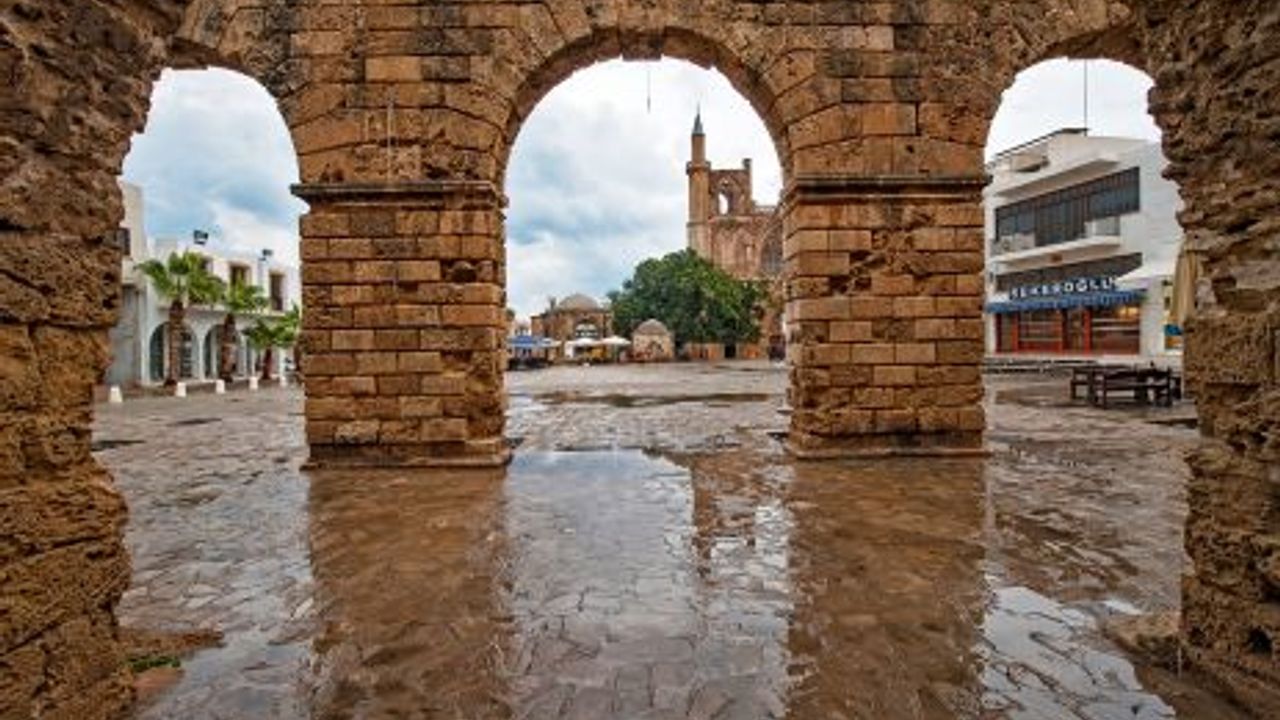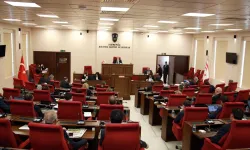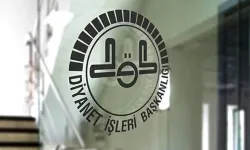It wouldn’t be a wrong association to define Famagusta, which celebrated its 2300th age in 2015, as the crossroads of civilisations or a bright star that left its mark in history. Historical and mysterious walled city of Famagusta, which reflects the magnificent gothic architecture of the Lusignan era and the samples of wonderful stone works, is waiting to be rediscovered with its unique characteristics. It is assumed that Famagusta was established by Ptolemeus king Philadelphus during 3rd century BC and named the city after his sister Arsinoe. Enkomi and Alashia commercial city, where the written Cyprus language was born, is the first circle of Famagusta’s development. After, the story of Salamis, which leaves its mark on history as one of the most important city kingdoms of Cyprus, starts. Due to the earthquakes and the devastation of Salamis by Arabs in 648, people migrate to the place that is currently called Famagusta to establish a small port town. They call the town “Ammohostos”, which means, hidden within sand, with the hopes that Arabs will not find it. Quickly developing due to the advantages of port and commerce, Famagusta rises to be the second important town after Nicosia during the Lusignan Era (1192-1489), right after a short dominion by Knight Templars. And in the language of Europeans, it starts to be known as “Famagusta”. Elements of ports and commerce played a huge role in the development of the city.
As Akka is conquered by Muslims, Famagusta embraces knights and nobles, becoming the richest port of the East. In 1373, it is ruled by the Genoese and between 1489 and 1571 when the Ottomans conquer the Island after a hard battle, it goes under the rule of Venetians. Built between the years of 1298-1312, St. Nicholas Cathedral where the kings would be crowned with the Kingdom of Jerusalem, stands as one of the gorgeous examples of Gothic art. It was turned into a mosque during the Ottoman Era with the addition of a minaret (Lala Mustafa Pasha Mosque). The square where the mosque is located is named after the freedom poet Namık Kemal who was sent to Famagusta for exile in 1873 for 38 months. Othello Tower, which is built during the Venetian Era and subject to the famous tragedy of William Shakespeare together with the stone lions of the walled city which the Famagustans mythologised by saying “Go complain to the lion” mystify the city further. City kingdom of Salamis, which is close to Famagusta and the icon museum St. Barnabas Monastery, which is named after St. Barnabas who contributed to the spread of Christianity in Cyprus together with St. Paul should definitely be visited.
Things to do in Famagusta;
· It will be a unique historical time tunnel trip to walk the walled city of Famagusta, an Open Air Museum, starting from the Sea Gate (Porta Del Mare) or the Land Gate.
· Meeting the oldest tree living in Cyprus, Ficus Sycomorus, which is right across St. Nicholas Cathedral and the same age with the Cathedral (around 710 years old)
· Feeling the tragic story of Desdemona at the Othello Tower, which is the subject to Shakespeare’s Othello tragedy.
· Visiting the impressive city kingdom of Salamis, which was inhabited for 21 centuries between the centuries 11th BC and 9th AC and served as the capital of Cyprus for long years, means taking a magical historical trip.
· It is known that the representative of 5th theory of the Bible, disciple of Christ who he named comforter St. Barnabas was born in Salamis and his grave is in North Cyprus. St. Barnabas Monastery and his grave constitute an important centre for faith tourism.
· Seeing the grave of 28. Mehmet Çelebi, the first Ottoman ambassador (Ambassador of Paris), which is a rare example of Ottoman stone work located in the garden of Buğday Mosque of Famagusta means discovering another characteristic of Ottomans.
· Visiting the prison and the museum of nation and freedom poet Namık Kemal who was sent to exile in Cyprus in 1873 for 38 months will make you think.
· Discovering the mystery of tens of valuable chapels by simply walking the streets of Famagusta.
· Seeing the settlement of Enkomi-Alasia, which is one of the most important settlements in Cypriot history, gave a lot of foundlings throughout the history and is the birth place of Cypriot written language.
· Attending the cultural and artistic events in Famagusta will take you on an artistic journey!
· St. Nicholas Cathedral (Lala Mustafa Pasha Mosque) where the Lusignan kings would be crowned as the King of Jerusalem is an example of masterful labour in the Middle East. It is communicating the greetings of the past civilisations in the middle of the walled city of Famagusta, where the footsteps of Lusignan, Venetian and Ottoman Eras can be heard echoing.
Famagusta, or as the owner of North Cyprus UK Newspaper Zorlu Cezaroğlu says, My Famagusta, is waiting to be discovered with its many layers. Go ahead and do so!



